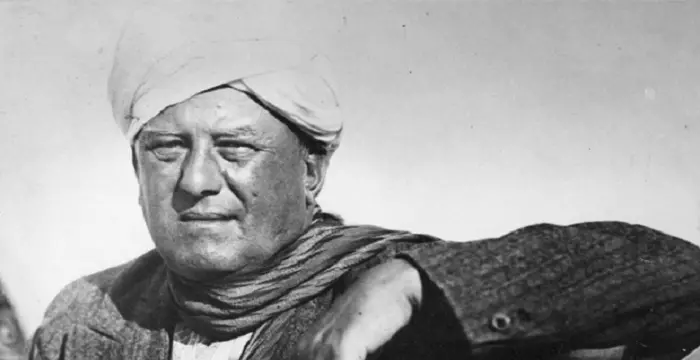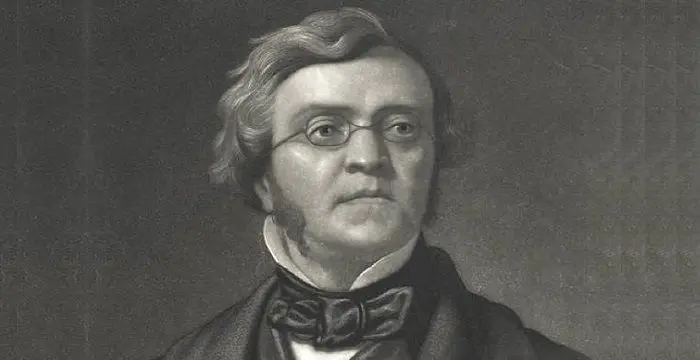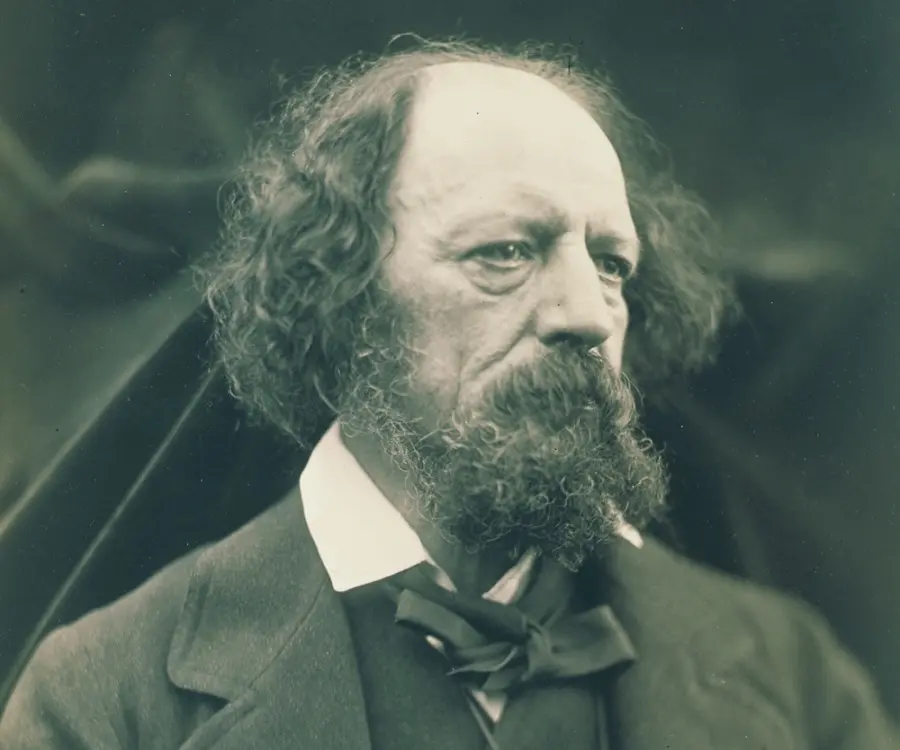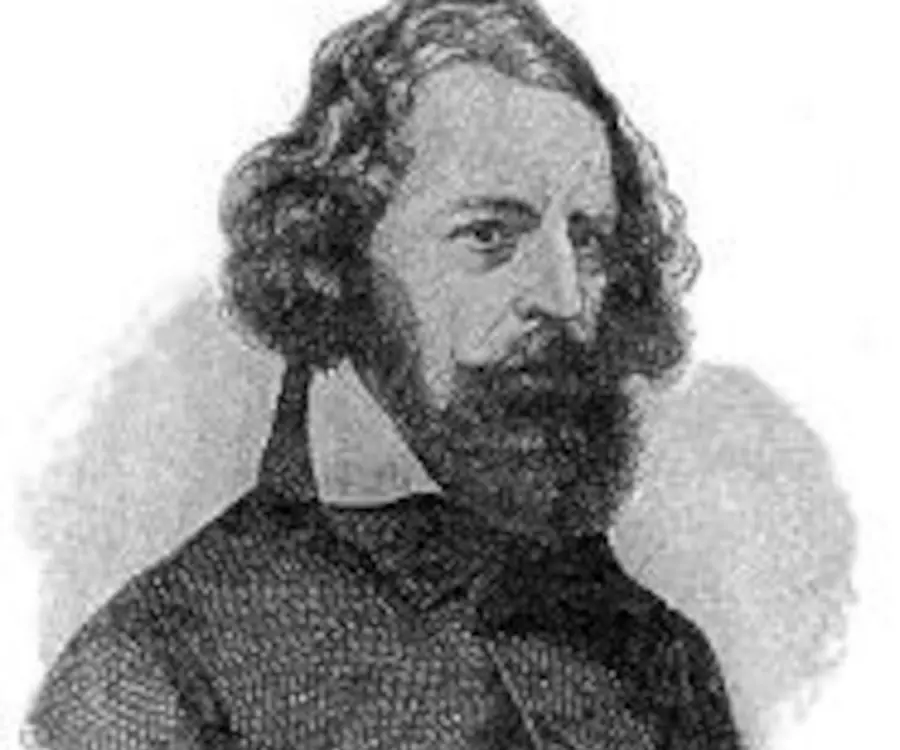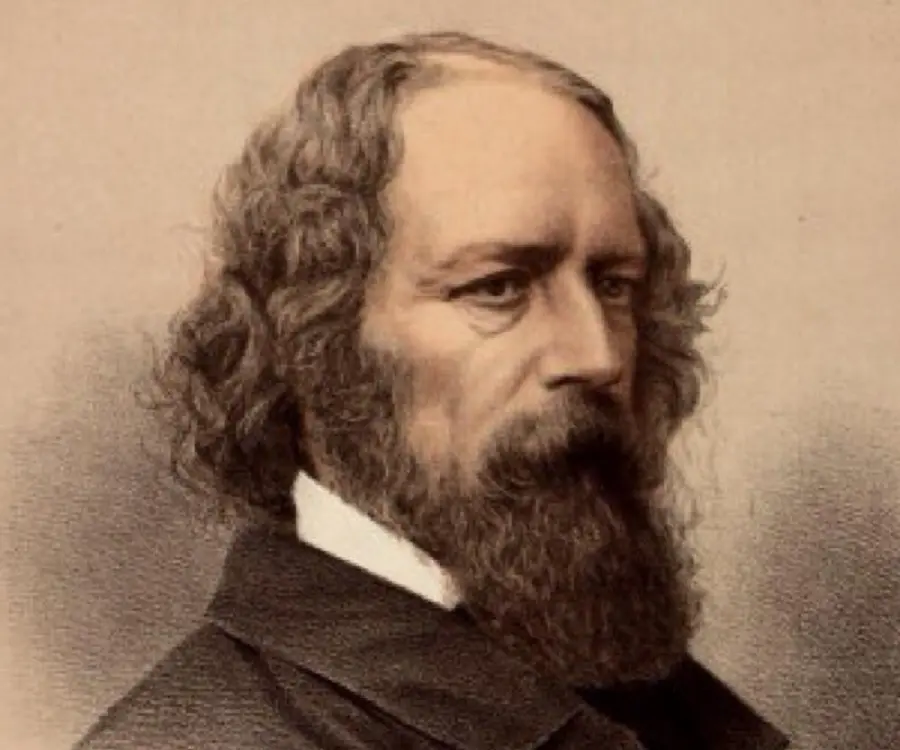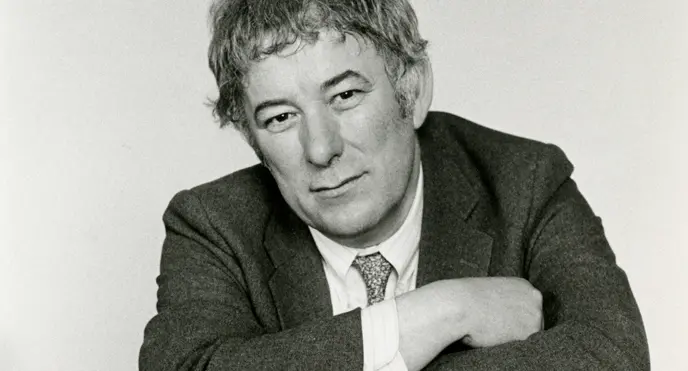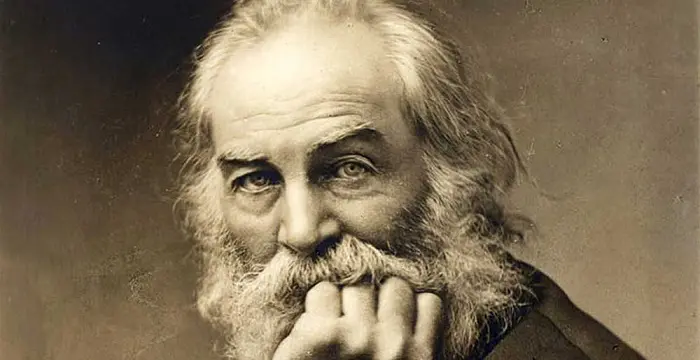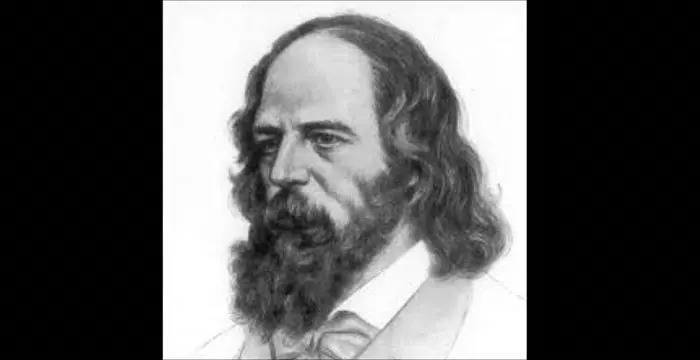
Alfred Lord Tennyson - Trinity College, Cambridge, Facts and Childhood
Alfred Lord Tennyson's Personal Details
Alfred Lord Tennyson was a poet laureate of the United Kingdom during the reign of Queen Victoria
| Information | Detail |
|---|---|
| Birthday | August 5, 1809 |
| Died on | October 6, 1892 |
| Nationality | British |
| Famous | Trinity College, Cambridge, Writers, Poets |
| Spouses | Emily Tennyson (m. 1850–1892) |
| Siblings | Charles Tennyson Turner, Edward Tennyson, Emilia Tennyson, Frederick Tennyson |
| Known as | 1st Baron Tennyson |
| Childrens | Hallam Tennyson, Lionel |
| Universities |
|
| Notable Alumnis |
|
| Birth Place | Somersby, Lincolnshire, England, United Kingdom |
| Gender | Male |
| Father | George Clayton Tennyson |
| Mother | Elizabeth Fytche |
| Sun Sign | Leo |
| Born in | Somersby, Lincolnshire, England, United Kingdom |
| Famous as | Poet |
| Died at Age | 83 |
// Famous Trinity College, Cambridge
Isaac Newton
Isaac Newton was an English scientist and mathematician, who discovered gravitation and Newtonian Mechanics. Read this biography to find more on his life.
Aleister Crowley
Aleister Crowley was an occultist and ceremonial magician who founded the ethical philosophy of Thelema. This biography of Aleister Crowley provides detailed information about his childhood, life, achievements, works & timeline.
William Makepeace Thackeray
William Thackeray was an English novelist and satirist. Read this brief biography to find more on his life & timeline.
Alfred Lord Tennyson's photo
Who is Alfred Lord Tennyson?
Alfred Lord Tennyson was a poet laureate of the United Kingdom during the reign of Queen Victoria. He is also one of the most acclaimed poets in English Literature. Tennyson continued and refined the traditions of Romantic Movement left to him by his predecessors, Wordsworth, Byron and Keats. His poetry was considered remarkable for its metrical variety, rich descriptive imagery and exquisite verbal melodies. His subject matter ranged from medieval legends to classical myths and from domestic situations to observations of nature. He had excelled the art of writing short lyrics which can be evident from his poems like, ‘In the valley of Cauteretz’, ‘Break, Break, Break’, ‘The Charge of the Light Brigade’, ‘Tears, Idle Tears’ and ‘Crossing the Bar’. One of his noted works include ‘In Memoriam A.H.H.’, which he wrote to commemorate his best friend Arthur Hallam. His other significant works include ‘Idylls of the King’, ‘Ulysses’, and ‘Tithonus’. Also, many of his phrases have become commonplaces of English Literature today. Some of his most frequently used phrases include “Nature, red in tooth and claw”, “Tis better to have loved and lost than never to have loved at all”, “Knowledge comes, but Wisdom lingers”, “The old order changeth, yielding place to new” and so on. After Shakespeare, Tennyson is the second most frequently quoted writer in The Oxford Dictionary of Quotations.
// Famous Poets
Charles Bukowski
Charles Bukowski was a German-born American novelist, short story writer and poet. With this biography, learn in details about his childhood, life, works, career and timeline
Seamus Heaney
Nobel Laureate Seamus Heaney was an Irish poet, playwright and translator. Know about his profile, childhood, life and timeline in the biography below.
Walt Whitman
Walt Whitman was an American poet, journalist and humanist. Read this brief biography to find more on his life & timeline.
Childhood & Early Life
Alfred Tennyson was born on 6 August 1809, in Somersby, a village in Lincolnshire, England. His father, George Clayton Tennyson, was a country clergyman, occupying the position of the rector at Somersby, Benniworth and Bag Enderby. Alfred’s mother, Elizabeth nee Fytche, was the daughter of a vicar.
Alfred was the fourth of his parents twelve children. While the eldest died at infancy, his second and third elder brothers, Frederick Tennyson and Charles Tennyson Turner, were also poets. That apart, Alfred had four brothers and four sisters, younger to him.
Alfred’s father, George Clayton Tennyson, was a man of varied attainments. He kept a large library and took care to educate his children. He was also good at money management, enabling the family to spend the summers by the sea. But that was only one side of him.
George Clayton was also a very embittered man. He was pushed into the church by his father, who later made George’s younger brother, Charles, his chief heir. Resentful, he took to drugs and drinks, often taking his ire on his wife and children, physically threatening them.
Young Alfred began to write poetries from a very early age, in part to take his mind off from the unhappy situation at home. Around the age of 13 or 14, he wrote a six-thousand-line epic in imitation of Sir Walter Scott in addition to a drama in blank verse.
In 1816, Alfred began his education at King Edward VI Grammar School, a boarding school located in Louth, Lincolnshire. In 1820, when his father began to suffer from frequent mental breakdown owing to excessive drinking, Alfred was brought back to be tutored at home.
In 1827, Alfred entered Trinity College, Cambridge, more as a means of escaping the disturbing ambience of his home. Another important event of this year was the publication of his works in ‘Poems by Two Brothers’. Although it also contained poems by Frederick and Charles, he was the major contributor.
Awakening of a Poet
At Cambridge, Alfred Tennyson began to enjoy his life for the first time. In early 1829, at the insistence of his college-mates, he submitted his poetry, ‘Timbuctoo’, set on the subject of Armageddon, for Chancellor's Gold Medal, ultimately winning the award.
It not only boosted his confidence as a poet, but also led to his meeting with another brilliant undergraduate, Arthur Henry Hallam. The two soon developed a close friendship that would last till Hallam’s death four years later.
In the later part of 1829, Tennyson and Hallam joined a secret club called ‘The Apostle’, whose members formed the cream of the university. Although Tennyson dropped out after a few meetings, he retained friendship with its members.
The realization that his friends not only accepted him as a poet, but also felt a certain degree of affection for him, brought into his personality much needed warmth. He began to devote more time towards his literally pursuit than studies.
In June 1830, he had his first solo book, ‘Poems, Chiefly Lyrical’, published. Among other forgettable poems the book contained several fine ones like ‘The Kraken’, ‘Ode to Memory’ and ‘Mariana’. Also in the same year, he went on a trip to Europe with Hallam, by now his best friend.
Alfred and Hallam’s idea was to help revolutionaries in their fight to overthrow the Spanish king by providing them with money. Through France they travelled to the Pyrenees, where they met the rebels; but to their dismay, they found them to be motivated by selfish greed, thus ending their noble mission.
Pyrenees left a lifelong influence on Tennyson and for the rest of his life mountains remained an important backdrop for many of his poetries. Cauteretz, the mountain village, the valleys and waterfalls, all remained with him till the end.
Return to Lincolshire
Alfred’s father, George Tennyson, died early in 1831 and with that the family’s financial condition became very bleak. Although his grandfather provided some relief it was not enough to support his studies at Trinity. Therefore, Alfred left Cambridge without acquiring a degree and returned to Lincolnshire in that very year.
Alfred’s grandfather offered to find him a position in the church if he would be ordained. But determined to devote his life to writing poems, he refused the offer. Instead he chose to live on an annual gift of £100, which he received from an aunt. For the time being, the family was allowed to stay at the rectory at Somersby and Tennyson lived there with the family until 1837.
Meanwhile in 1832, he published his second book, ‘Poems by Alfred Tennyson’. The book included the initial versions of many of his famous works like ‘The Lady of Shalott’, ‘The Palace of Art’, ‘A Dream of Fair Women’, ‘The Hesperides’, ‘Oenone’ ‘The Lotos-Eaters’ and ‘Mariana in the South’.
‘Poems by Alfred Tennyson’ received very bad reviews . The worst reviews were written by Edward Bulwer and John Wilson Croker. While the former was a friend of his uncle the latter often prided that it was his review of Keats’ ‘Endymion’, which caused the poet’s death.
Always thin-skinned, Tennyson was so upset about these criticisms that he did not publish any other work for almost a decade. However, encouraged by Hallam and other Apostle friends, he continued writing.
In 1833, Hallam died while on a trip to Venice. While the tragic incident threw young Tennyson into grief it also provided the stimulus for writing some of his finest poems such as ‘Ulysses’, ‘Morte d'Arthur’, ‘Tithonus’, ‘Tiresias’, ‘Break, break, break’ and ‘Oh! that 'twere possible’.
In London
Alfred Tennyson’s grandfather died in 1835 and with his death, the meager assistance he used to provide was stopped by his uncle. Continuing to live at Somersby rectory, the family finally moved to High Beach inside Epping Forest in 1837, where they lived in the Beach Hill House until 1840.
In 1840, Tennyson moved to London, where he put up at Chapel House, Twickenham. All along, he continued to write, amassing a huge collection of unpublished works. This was also the year; he invested his patrimony in an ecclesiastical wood-carving enterprise.
His friends were now worried about him and one of them, Edward FitzGerald, almost nagged him into publishing his accumulated works in two volumes. While the first volume consisted of already published works that had undergone intense revision, the second volume consisted of entirely new poems.
The books, published in 1842 as ‘Poems’, met with immediate success. He was soon acclaimed as the best poet of his generation. But ill fortune continued to dog him. Also in the same year, the company in which he had invested his patrimony crashed and with that he lost everything he had.
In deep melancholia, he stopped writing and starting from 1843, underwent hydropathic treatment several times; but without any permanent benefit. He did have respite, when at the death of the owner of the company he received £2,000 as insurance benefit.
Tennyson was finally relieved from financial worries when in 1845, he was granted a government civil list pension of £200. Two years later, he had his first long poem, entitled ‘The Princess: A Medley’, published.
Poet Laureate
At the beginning of 1849, Tennyson received a large sum of money as advance for assembling the elegies he had written on Hallam as one long poem. Published as ‘In Memoriam A.H.H’ in June 1850, the book made him one of the greatest living poets in England.
Also in 1850, Tennyson was appointed Poet Laureate on the death of William Wordsworth, who had been holding the position for last seven years. Secured, he now continued with his literally pursuit, writing poems both as official duty and for his own pleasure.
Some of the poems written as his official duty were less inspiring; but many others stood out in their beauty. ‘The Charge of the Light Brigade’, a dramatic tribute to the British cavalrymen involved in the Crimean War, was one of his best known work of this period.
In 1874, along with writing poems, Tennyson tried his hand at poetic dramas. His first work in this genre, ‘Queen Mary’ (1875), was followed by few more. Although some of them were successfully performed they never achieved the same distinction his poems did.
Major Works
Alfred Tennyson is best remembered for his short lyrics such as ‘Break, Break, Break’, ‘The Brook’, ‘The Charge of the Light Brigade, ‘Tears, Idle Tears’, ‘Crossing the Bar’ etc. In addition, he also wrote quite a few blank verses among which the most famous are: ‘Idylls of the King’, ‘Ulysses’, and ‘Tithonus’.
He is also remembered for his ’In Memoriam AHH’, a requiem for his Cambridge friend Arthur Henry Hallam. It contains nearly 3000 lines, which have been divided into 131 sections, with prologue and epilogue. Although it grew out of his personal grief it speaks for everybody.
Awards & Achievements
Tennyson was offered peerage first in 1865 and then in 1868; but each time, he declined the offer. Finally in 1883, he agreed to accept the honor at the solicitation of Prime Minister Gladstone. Finally in 1884, he was created Baron Tennyson, of Aldworth in the County of Sussex and of Freshwater in the Isle of Wight by Queen Victoria.
He received honorary doctorates from the universities of Oxford and Edinburgh. Thrice he had invitation from the University of Cambridge to accept an honorary degree, but declined.
Personal Life & Legacy
In 1836, Alfred Tennyson became involved with Emily Sellwood, daughter of their family solicitor. Although they considered themselves engaged by 1837 due to Tennyson’s financial condition and the frequent trances that he lapsed into, which he thought was due to epilepsy, he broke it off by 1840.
They again resumed communication in 1849, finally getting married in the middle of June 1850. Three sons were born to them, out of which one died in infancy.
Their eldest son, Hallam, was named after his Cambridge friend Hallam. He became the 2nd Baron Tennyson and authored ‘Tennyson: a Memoir’. Their younger son Lionel was inflicted with ‘jungle fever’ on a visit to India and died on the way back home in 1886.
Until November 1853, the family lived mostly in London. Thereafter, they moved to the Isle of Wight, where he built a secluded house in Farringford. But in 1869, pestered by tourists, he was forced to move to Aldworth, in West Sussex. However, they continued to retain their house in Farringford.
Alfred Tennyson died on 6 October 1892, at Aldworth, at the age of 83, and was buried at Westminster Abbey. He was survived by his wife and eldest son, Hallam.
Farringford, where he spent his last years remains associated with his name. Tennyson Down and the Tennyson Trail on the Isle of Wight are named after him.
A memorial was erected in his honor at All Saints' Church at Freshwater. A statue built in the chapel of Trinity College, Cambridge, also bears his legacy.
Trivia
According to the Oxford Dictionary of Quotations, Tennyson is the ninth most frequently quoted writer. Among his oft quoted phrases are "'Tis better to have loved and lost / Than never to have loved at all"; "Theirs not to reason why, / Theirs but to do and die", "The old order changeth, yielding place to new" etc.
// Famous Writers
Joyce Meyer
Joyce Meyer is a Christian author and speaker. This biography provides detailed information about her childhood, life, achievements, works & timeline
Temple Grandin
Temple Grandin is a well-known American writer, autistic activist and animal expert. This biography profiles her childhood, life, achievements, career and timeline
Tennessee Williams
Tennessee Williams was one of the greatest playwrights of the 20th century. This biography of Tennessee Williams provides detailed information about his childhood, life, achievements, works and timeline.
Alfred Lord Tennyson's awards
| Year | Name | Award |
|---|---|---|
Other | ||
| 0 | 1829 - Chancellor's Gold Medal | |
Alfred Lord Tennyson biography timelines
- // 6th Aug 1809Alfred Tennyson was born on 6 August 1809, in Somersby, a village in Lincolnshire, England. His father, George Clayton Tennyson, was a country clergyman, occupying the position of the rector at Somersby, Benniworth and Bag Enderby. Alfred’s mother, Elizabeth nee Fytche, was the daughter of a vicar.
- // 1816 To 1820In 1816, Alfred began his education at King Edward VI Grammar School, a boarding school located in Louth, Lincolnshire. In 1820, when his father began to suffer from frequent mental breakdown owing to excessive drinking, Alfred was brought back to be tutored at home.
- // 1827In 1827, Alfred entered Trinity College, Cambridge, more as a means of escaping the disturbing ambience of his home. Another important event of this year was the publication of his works in ‘Poems by Two Brothers’. Although it also contained poems by Frederick and Charles, he was the major contributor.
- // 1829At Cambridge, Alfred Tennyson began to enjoy his life for the first time. In early 1829, at the insistence of his college-mates, he submitted his poetry, ‘Timbuctoo’, set on the subject of Armageddon, for Chancellor's Gold Medal, ultimately winning the award.
- // 1829In the later part of 1829, Tennyson and Hallam joined a secret club called ‘The Apostle’, whose members formed the cream of the university. Although Tennyson dropped out after a few meetings, he retained friendship with its members.
- // 1830In June 1830, he had his first solo book, ‘Poems, Chiefly Lyrical’, published. Among other forgettable poems the book contained several fine ones like ‘The Kraken’, ‘Ode to Memory’ and ‘Mariana’. Also in the same year, he went on a trip to Europe with Hallam, by now his best friend.
- // 1831Alfred’s father, George Tennyson, died early in 1831 and with that the family’s financial condition became very bleak. Although his grandfather provided some relief it was not enough to support his studies at Trinity. Therefore, Alfred left Cambridge without acquiring a degree and returned to Lincolnshire in that very year.
- // 1832Meanwhile in 1832, he published his second book, ‘Poems by Alfred Tennyson’. The book included the initial versions of many of his famous works like ‘The Lady of Shalott’, ‘The Palace of Art’, ‘A Dream of Fair Women’, ‘The Hesperides’, ‘Oenone’ ‘The Lotos-Eaters’ and ‘Mariana in the South’.
- // 1833In 1833, Hallam died while on a trip to Venice. While the tragic incident threw young Tennyson into grief it also provided the stimulus for writing some of his finest poems such as ‘Ulysses’, ‘Morte d'Arthur’, ‘Tithonus’, ‘Tiresias’, ‘Break, break, break’ and ‘Oh! that 'twere possible’.
- // 1835 To 1837Alfred Tennyson’s grandfather died in 1835 and with his death, the meager assistance he used to provide was stopped by his uncle. Continuing to live at Somersby rectory, the family finally moved to High Beach inside Epping Forest in 1837, where they lived in the Beach Hill House until 1840.
- // 1837Alfred’s grandfather offered to find him a position in the church if he would be ordained. But determined to devote his life to writing poems, he refused the offer. Instead he chose to live on an annual gift of £100, which he received from an aunt. For the time being, the family was allowed to stay at the rectory at Somersby and Tennyson lived there with the family until 1837.
- // 1840In 1840, Tennyson moved to London, where he put up at Chapel House, Twickenham. All along, he continued to write, amassing a huge collection of unpublished works. This was also the year; he invested his patrimony in an ecclesiastical wood-carving enterprise.
- // 1842The books, published in 1842 as ‘Poems’, met with immediate success. He was soon acclaimed as the best poet of his generation. But ill fortune continued to dog him. Also in the same year, the company in which he had invested his patrimony crashed and with that he lost everything he had.
- // 1843In deep melancholia, he stopped writing and starting from 1843, underwent hydropathic treatment several times; but without any permanent benefit. He did have respite, when at the death of the owner of the company he received £2,000 as insurance benefit.
- // 1845Tennyson was finally relieved from financial worries when in 1845, he was granted a government civil list pension of £200. Two years later, he had his first long poem, entitled ‘The Princess: A Medley’, published.
- // 1849 To 1850At the beginning of 1849, Tennyson received a large sum of money as advance for assembling the elegies he had written on Hallam as one long poem. Published as ‘In Memoriam A.H.H’ in June 1850, the book made him one of the greatest living poets in England.
- // 1849 To 1850They again resumed communication in 1849, finally getting married in the middle of June 1850. Three sons were born to them, out of which one died in infancy.
- // 1850Also in 1850, Tennyson was appointed Poet Laureate on the death of William Wordsworth, who had been holding the position for last seven years. Secured, he now continued with his literally pursuit, writing poems both as official duty and for his own pleasure.
- // Nov 1853Until November 1853, the family lived mostly in London. Thereafter, they moved to the Isle of Wight, where he built a secluded house in Farringford. But in 1869, pestered by tourists, he was forced to move to Aldworth, in West Sussex. However, they continued to retain their house in Farringford.
- // 1874 To 1875In 1874, along with writing poems, Tennyson tried his hand at poetic dramas. His first work in this genre, ‘Queen Mary’ (1875), was followed by few more. Although some of them were successfully performed they never achieved the same distinction his poems did.
- // 1886Their eldest son, Hallam, was named after his Cambridge friend Hallam. He became the 2nd Baron Tennyson and authored ‘Tennyson: a Memoir’. Their younger son Lionel was inflicted with ‘jungle fever’ on a visit to India and died on the way back home in 1886.
- // 6th Oct 1892Alfred Tennyson died on 6 October 1892, at Aldworth, at the age of 83, and was buried at Westminster Abbey. He was survived by his wife and eldest son, Hallam.
// Famous Leo Celebrities peoples
Eugenia Cooney
Check out all that you wanted to know about Eugenia Cooney, the famous American Vlogger & YouTube Personality; her birthday, her family and personal life, her boyfriends, fun trivia facts and more.
Princess D
Princess D (Destiny Indira Cox) is an American rapper, dancer and social media personality. Let’s have a look at her family and personal life including age, birthday, net worth, and fun facts.
Payton Moormeier
Payton Moormeier is an American social-media personality best known for his musical.ly videos. Check out this family, personal life, etc.
Grian
Grian is an English YouTube gamer and social media influencer. Check out this biography to know about his birthday, childhood, family life, achievements and fun facts about him.
Emmi Butler
Emmi Butler is an American YouTuber and social media star. Let’s take a look at her family and personal life including age, date of birth, net worth, and fun facts.
Erica Delsman
Erica Delsman is an American Musical.ly Star and social media personality. Let’s take a look at her family & personal life including age, date of birth, net worth, and fun facts.
Alfred Lord Tennyson's FAQ
What is Alfred Lord Tennyson birthday?
Alfred Lord Tennyson was born at 1809-08-05
When was Alfred Lord Tennyson died?
Alfred Lord Tennyson was died at 1892-10-06
Where was Alfred Lord Tennyson died?
Alfred Lord Tennyson was died in Lurgashall, Sussex, England, United Kingdom
Which age was Alfred Lord Tennyson died?
Alfred Lord Tennyson was died at age 83
Where is Alfred Lord Tennyson's birth place?
Alfred Lord Tennyson was born in Somersby, Lincolnshire, England, United Kingdom
What is Alfred Lord Tennyson nationalities?
Alfred Lord Tennyson's nationalities is British
Who is Alfred Lord Tennyson spouses?
Alfred Lord Tennyson's spouses is Emily Tennyson (m. 1850–1892)
Who is Alfred Lord Tennyson siblings?
Alfred Lord Tennyson's siblings is Charles Tennyson Turner, Edward Tennyson, Emilia Tennyson, Frederick Tennyson
Who is Alfred Lord Tennyson childrens?
Alfred Lord Tennyson's childrens is Hallam Tennyson, Lionel
What was Alfred Lord Tennyson universities?
Alfred Lord Tennyson studied at Trinity College, Cambridge, Cambridge University
What was Alfred Lord Tennyson notable alumnis?
Alfred Lord Tennyson's notable alumnis is Trinity College, Cambridge
Who is Alfred Lord Tennyson's father?
Alfred Lord Tennyson's father is George Clayton Tennyson
Who is Alfred Lord Tennyson's mother?
Alfred Lord Tennyson's mother is Elizabeth Fytche
What is Alfred Lord Tennyson's sun sign?
Alfred Lord Tennyson is Leo
How famous is Alfred Lord Tennyson?
Alfred Lord Tennyson is famouse as Poet

